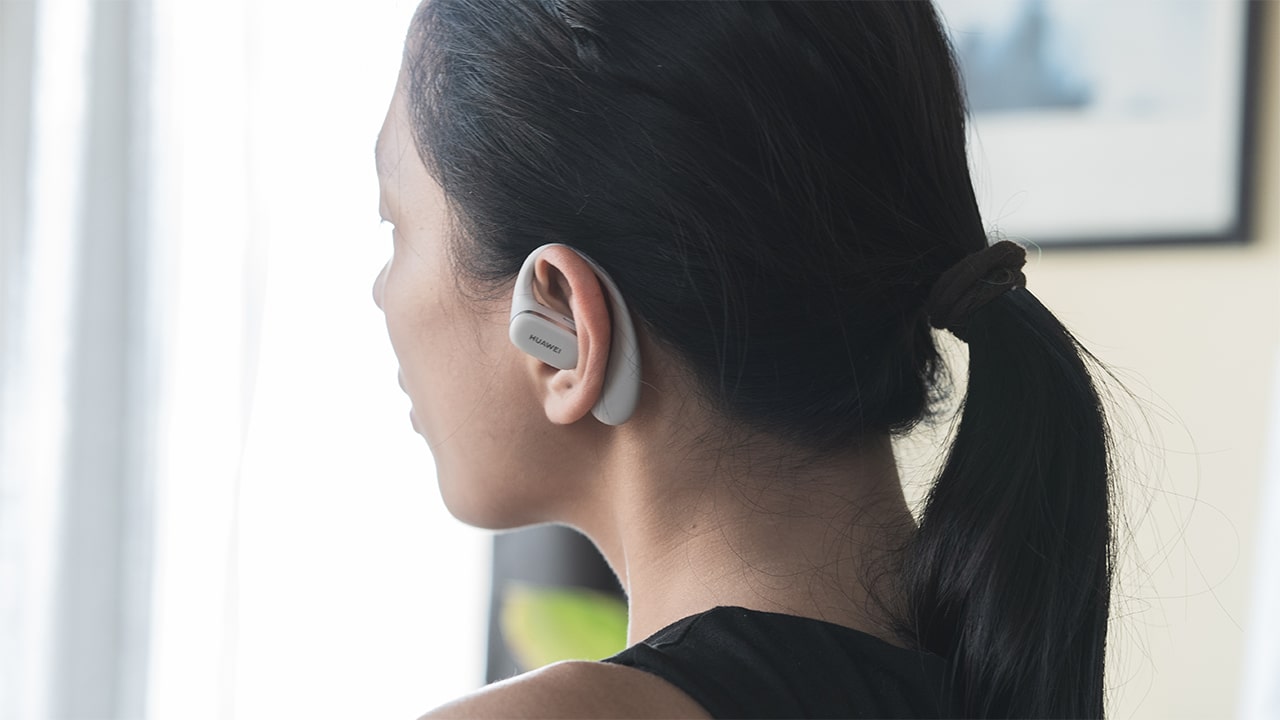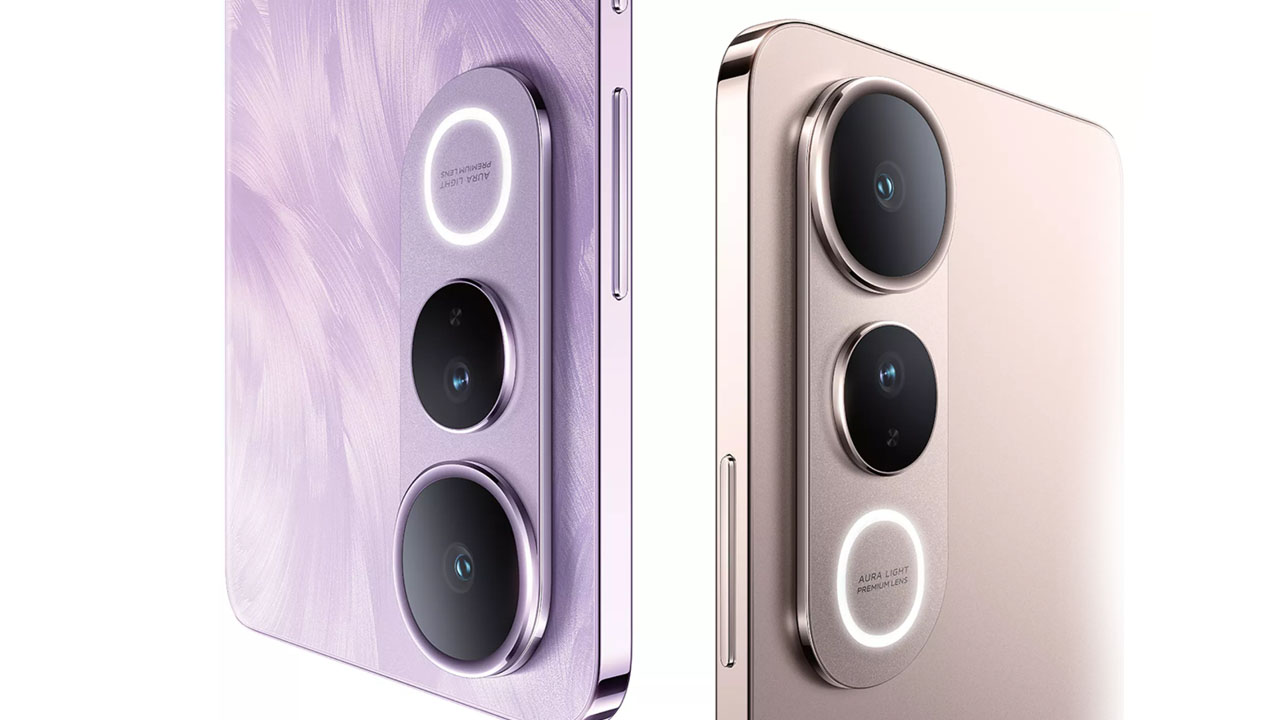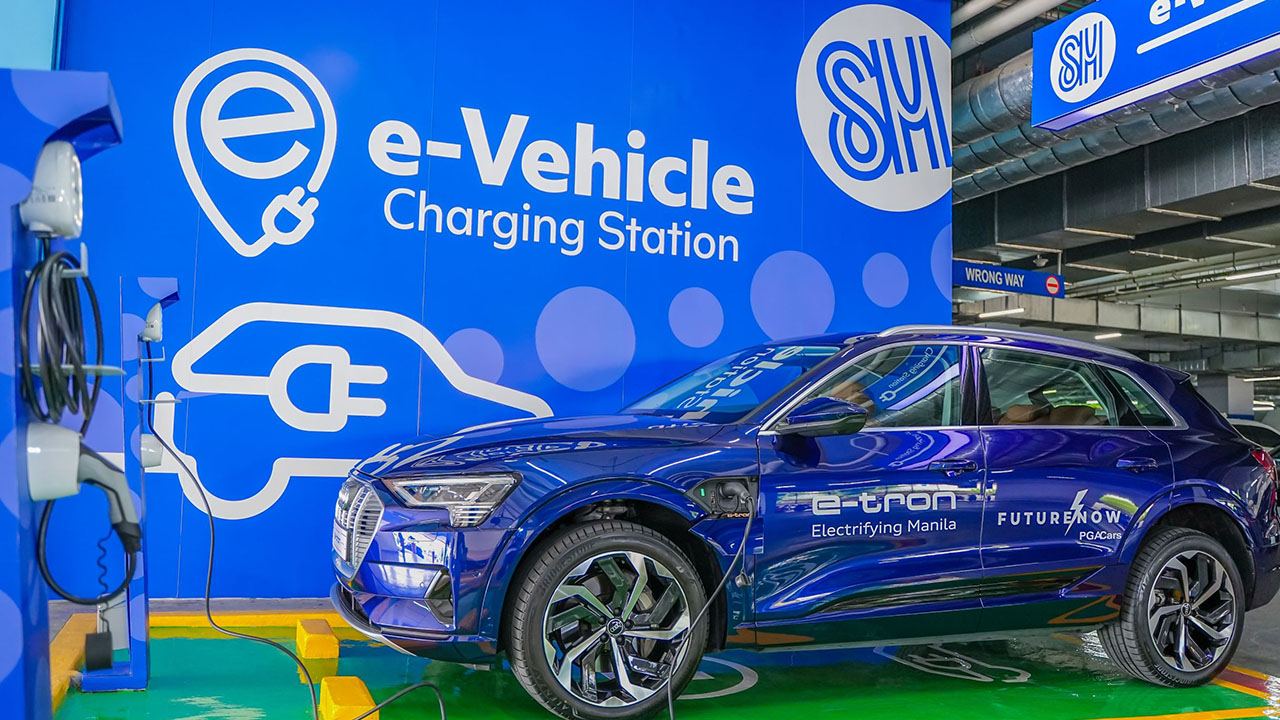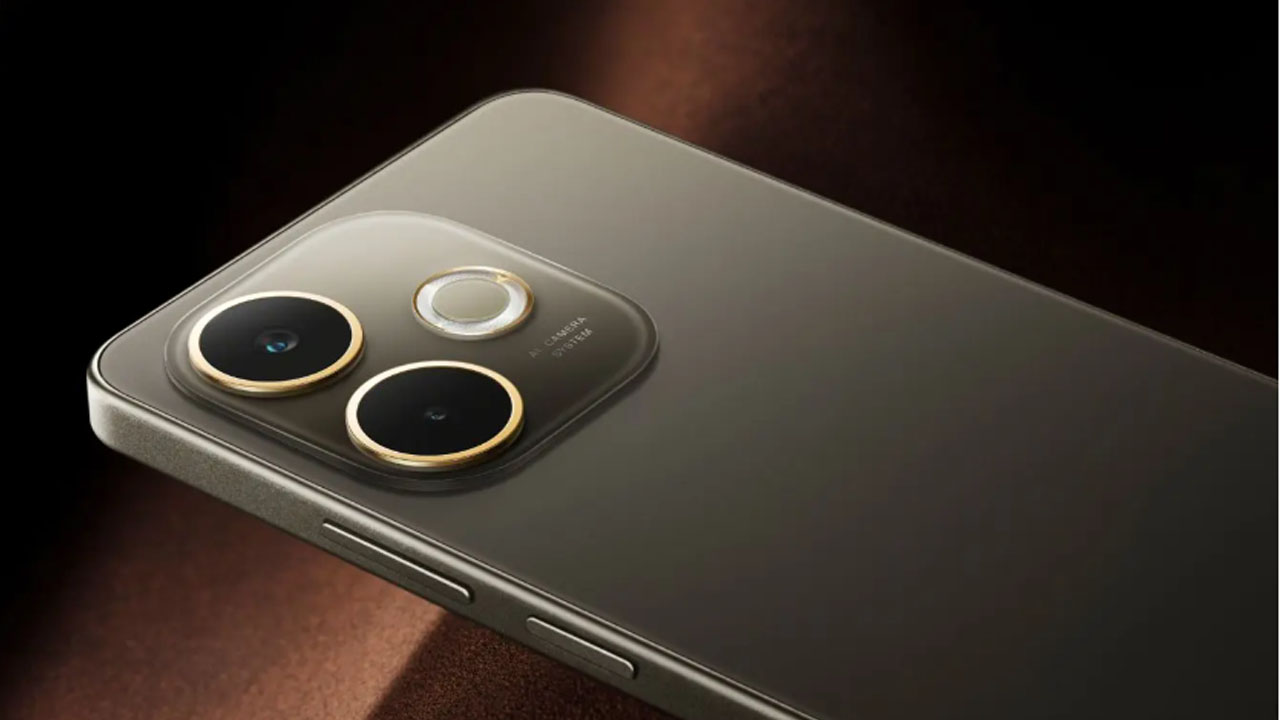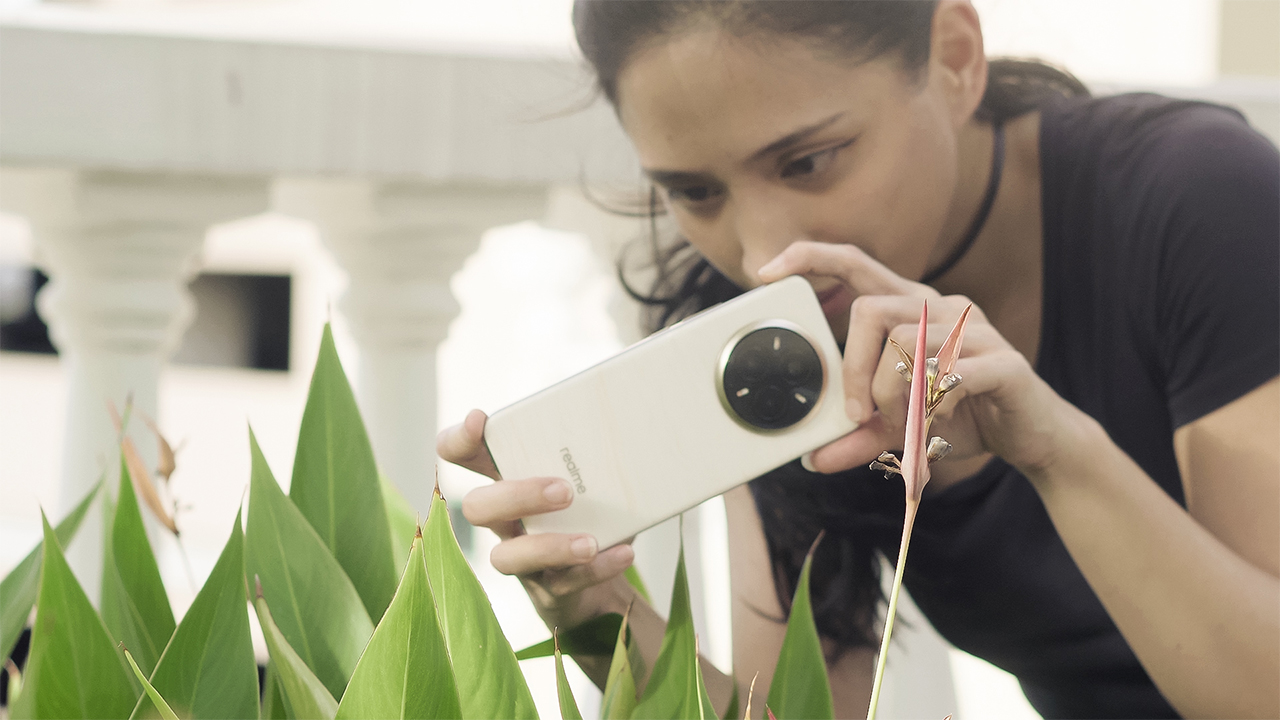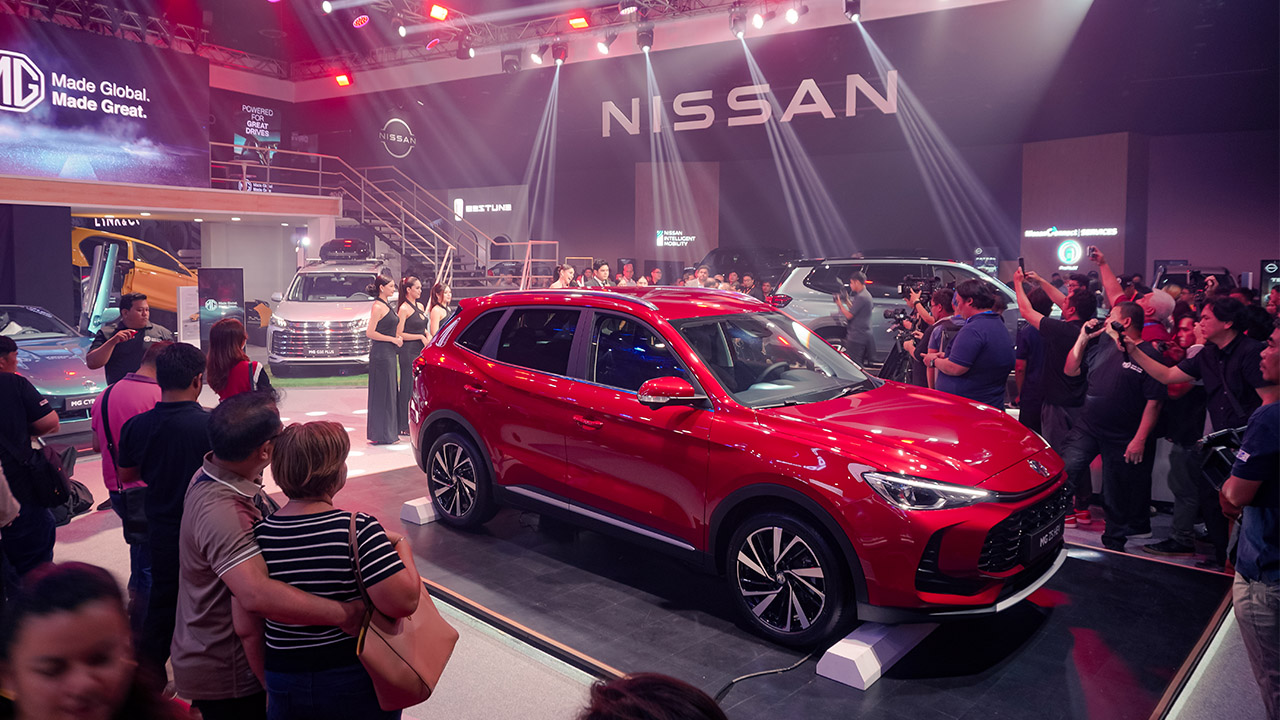But who better to bring it into the future than Dyson? With its already impressive portfolio of smart and sleek cleaners, Dyson now adds its very first dedicated wet floor cleaner, the Dyson WashG1.
As Dyson’s first foray into dedicated wet-floor cleaning, this device reimagines mopping by combining advanced engineering with user-friendly functionality.
What is it?
The Dyson WashG1 is probably the next evolution of the everyday household mop.
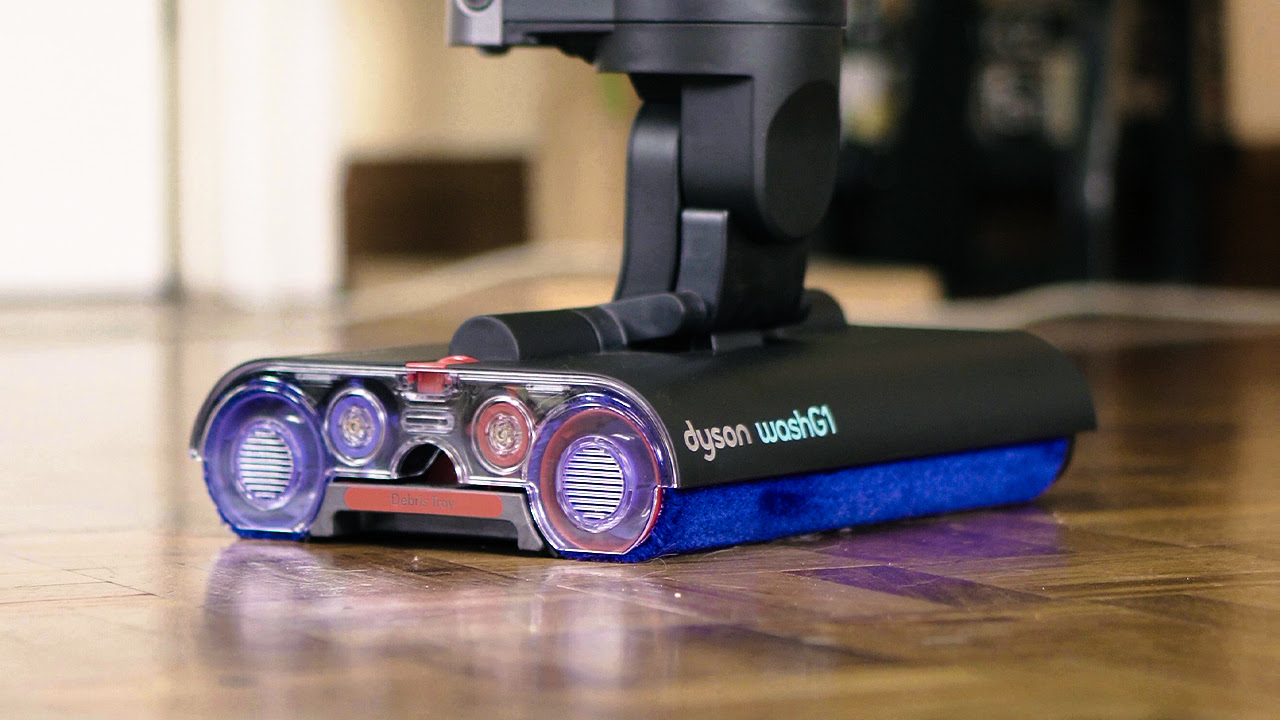
Instead of the repetitive dance of soak-wring-mop, the WashG1 takes a more hygienic and modern-day approach utilizing a dual-tank system that keeps clean and dirty water separate throughout your cleaning session.
To address the strain of mopping back and forth, it uses specially developed motorized rollers that ensure a deep clean while also removing and separating wet and dry debris simultaneously
The dry debris is then deposited into a removable tray that you can pop out and empty after your cleaning session.
The WashG1 is specifically designed for hard surfaces like wood, tile, and laminate. It offers three adjustable hydration levels, so whether you’re tackling a light spill or a sticky stain, there’s a mode for that. It isn’t, however, for use on carpets.
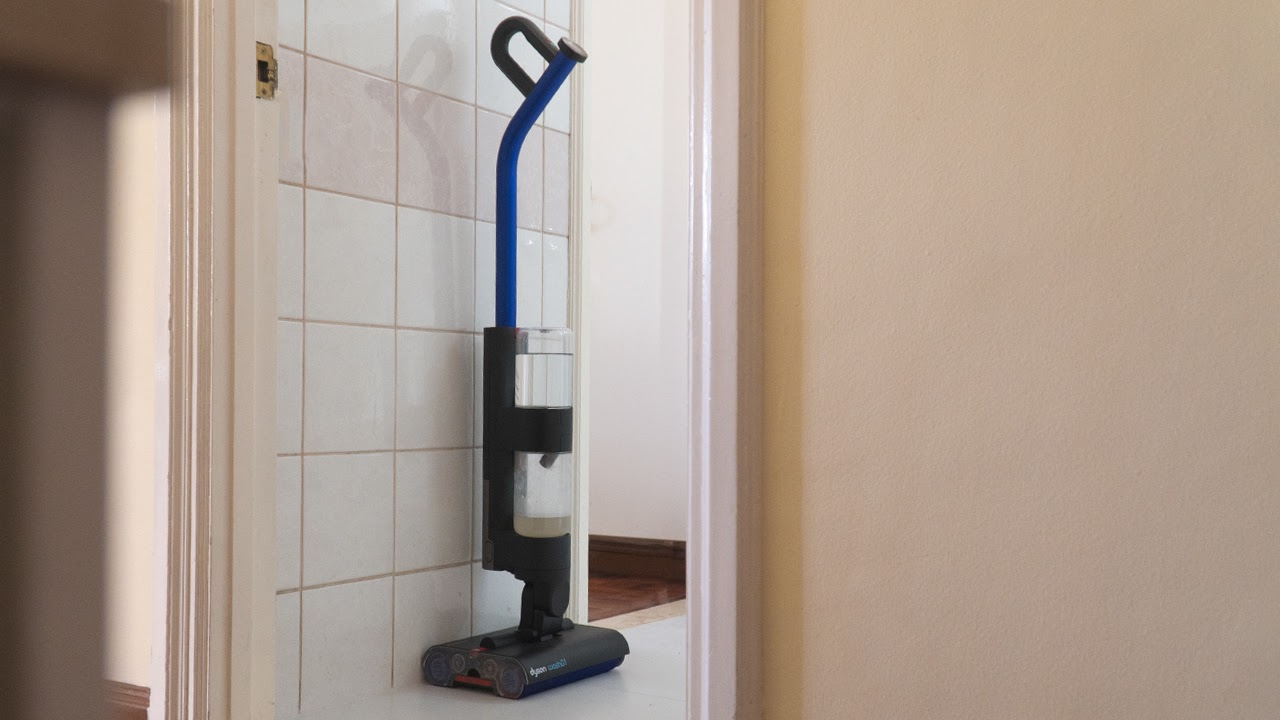
With a touch of a button, the machine also self-cleans; flushing the rollers and trays with clean water, leaving them ready for the next use.
It’s wireless and can run up to 30 minutes on a full charge. There’s a little display on top of the handle that will countdown the minutes you have left on the device.
As for how much it can cover, Dyson says that the time is enough for about 200 sqm of space.
Dyson WashG1 quick review
The Dyson WashG1 comes out of the box in parts but I appreciate how easy enough it was to set up. A few clicks and snaps and it’s ready to go.
It currently only comes in one color (hopefully more in the future) but the design is sleek, modern, and very much Dyson.
The cleaning performance? Impressive, especially on everyday spills.
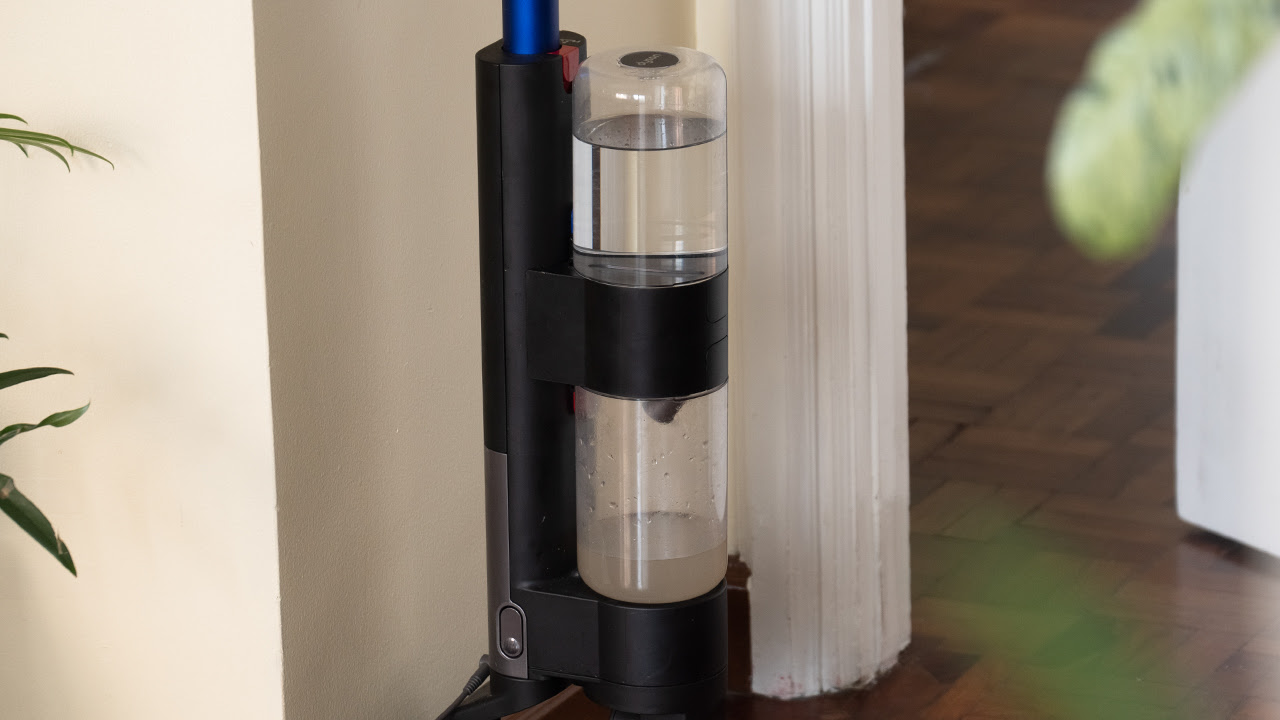
Whether it was my morning coffee drips or those mysterious sticky spots that appeared in the kitchen, the WashG1 handled them well.
For bigger messes, it was necessary to go slower, increase the hydration level, and do more than one pass.
I suppose one of my favorite things about the WashG1 is how it does not at all feel like a mop.
It operates more like a vacuum cleaner and you’re doing a lot less, physically, than you would with a regular mop. Yet, floors still get just as or even cleaner.
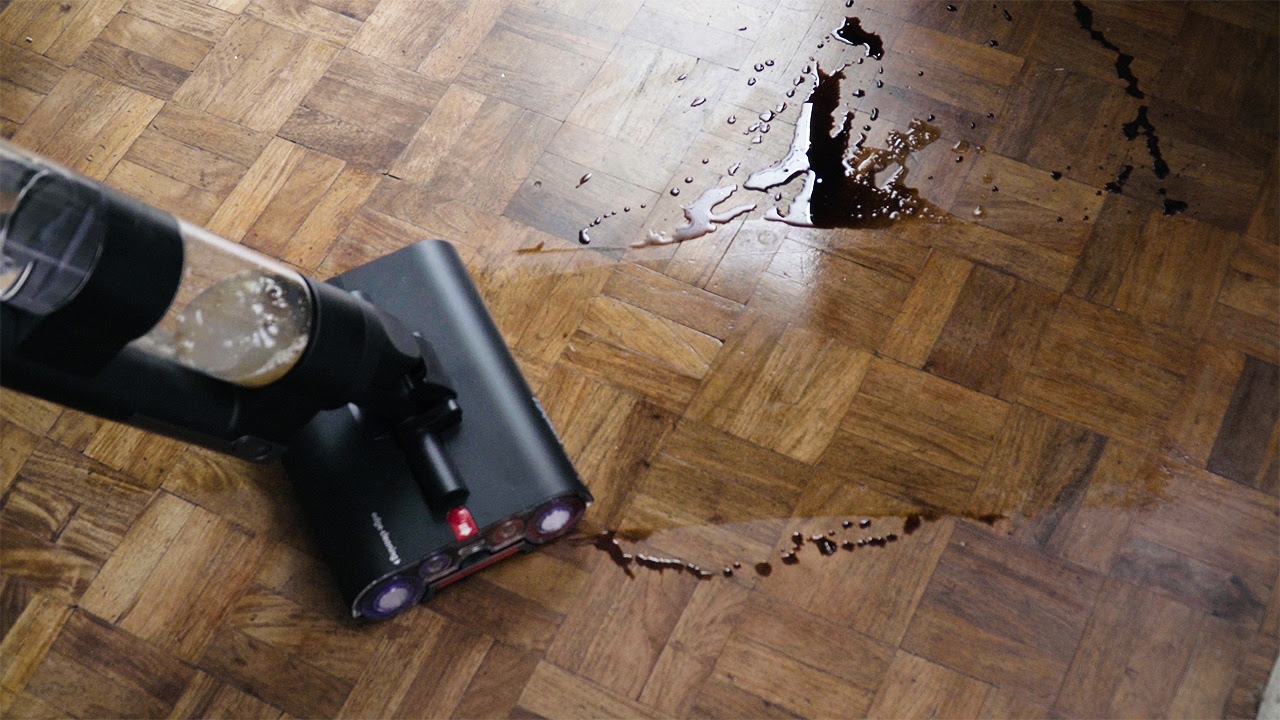
I also particularly love how quickly the floors dry after cleaning.
I tested the WashG1 on wood, laminated tiles, and ceramic flooring, and there were no noticeable streak marks left behind – a huge win for those of us who can’t wait hours for floors to dry before family or guests walk through.
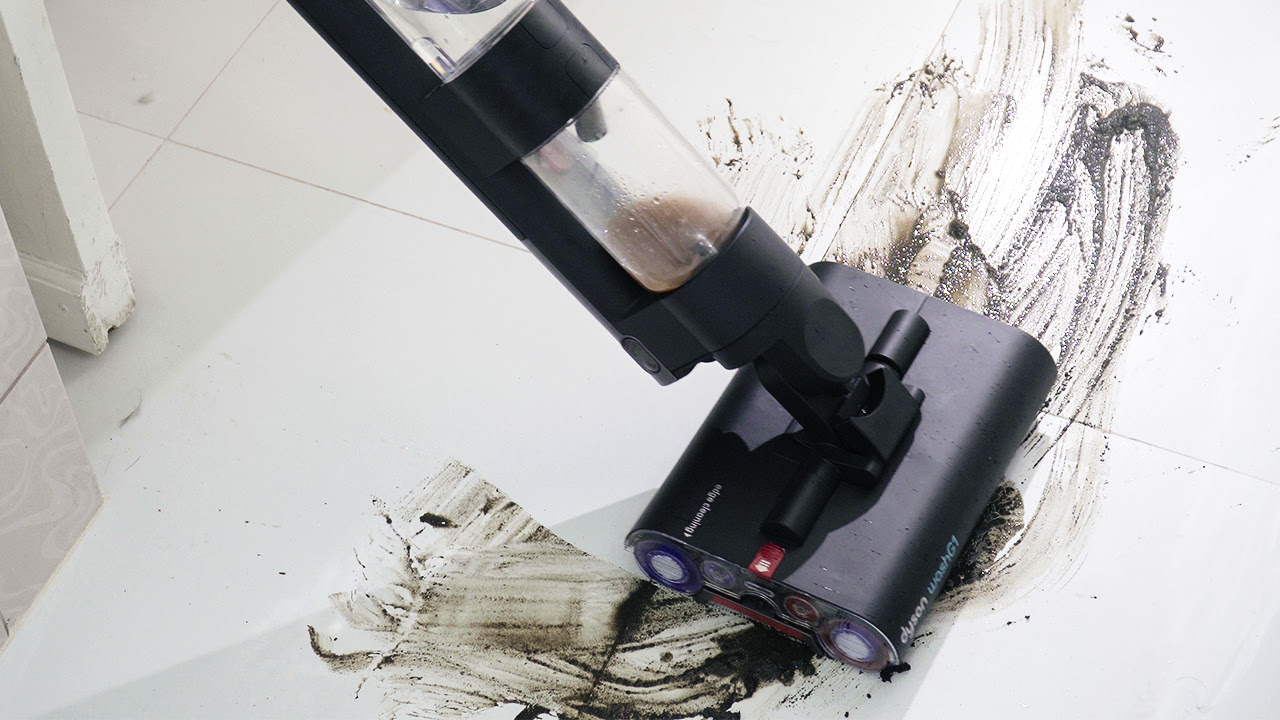
I’m sure you’ve probably felt by now that mopping really isn’t my favorite chore. One of the big reasons why is that having to clean it afterward is just as taxing as cleaning up messes.
So I was pretty excited about the WashG1’s self-cleaning feature.
Dyson suggests doing a self-cleaning cycle after every use and since I want to maintain those rollers for as long as I can, I do just that.

Once I finished cleaning our space, I docked the WashG1 to its base. It’ll then prompt you on its tiny display to do a self-cleaning session. Now, you don’t actually have to and you just leave it alone to charge but again, it’s better for long-term maintenance.
The animation on the display instructs you to clean out the dry debris tray and dirty water tank as well as refill the clean water tank. Once I did that, I just pushed the button and you’ll hear it start cleaning the rollers.
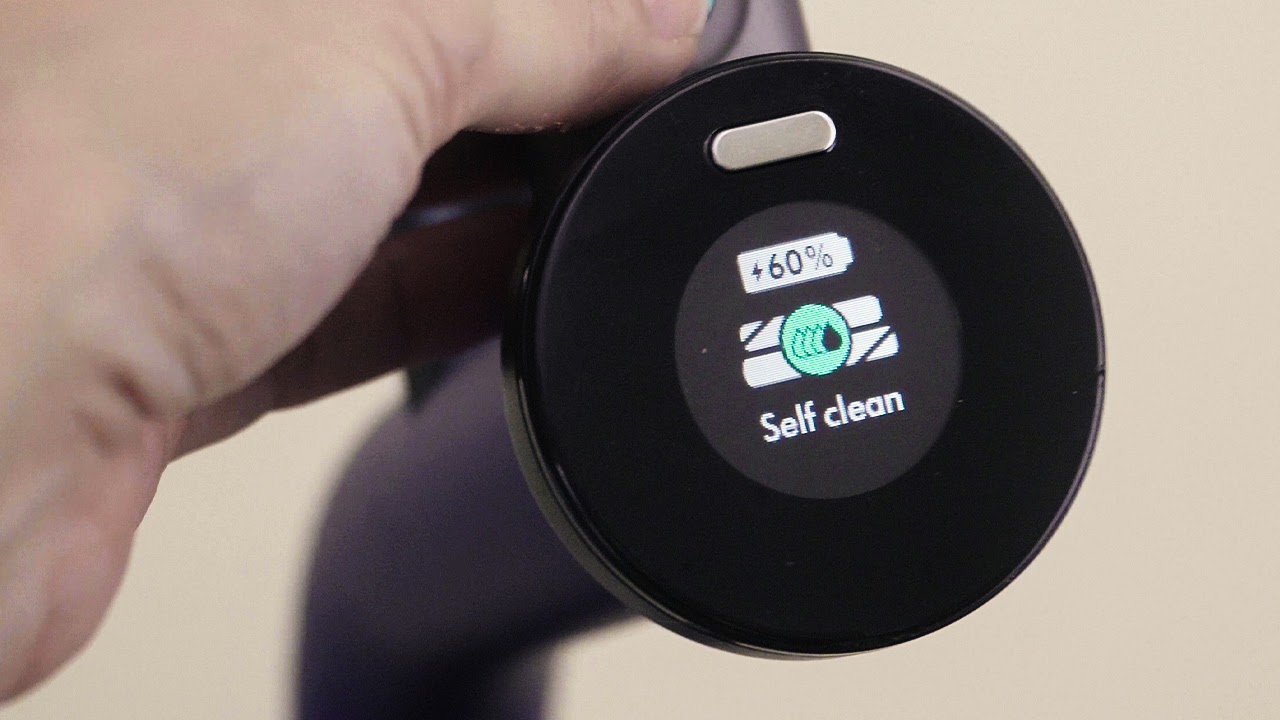
It uses clean water to flush out the leftover dirt and grime that the rollers might have soaked up.
When I cleaned up more intensive messes, I noticed that the rollers pushed out dirtier water. When this happens, I usually do more than one self-cleaning session to really flush out all that icky-ness.
Sure, it’s a little more effort. But pushing a button beats spinning a wet mop over and over again till it’s dry.
The Not-So-Perfect Parts
Let’s talk about what could be better. Being a first-gen device, there’s going to be room for improvement.
And I think it should start with the charging station. For one, it’s rather flimsy and doesn’t stay in place too well. It also doesn’t offer a seamless way to dock the device since you have to lift the WashG1 to get it into place. Thankfully, it isn’t too heavy of a device.
And I know this is a minor thing but I also find the cord too short.
Now while it claims a 30-minute battery life, you’ll find yourself refilling the water tank more than once during that time.
I needed to dump and refill twice during a 15-minute cleaning session in my apartment.
And while it does suck up dry debris, it does not and can not replace a vacuum. It is not designed to suck up big chunks of food or larger debris like that. Thick hair clumps, for example, will just become wet and harder to pick up if you roll over them.
It’s good for everyday cleaning and to make deep cleaning less frequent.
Tips and tricks to make the best of your WashG1
- Always fill the water tank to the maximum level and double-check that it’s properly sealed. Trust me, dealing with a leaking tank while cleaning is not fun.
- Match the cleaning mode to your mess:
- Level 1 for light water spills
- Level 2 when dealing with debris like coffee grounds
- Level 3 for those stubborn sauce spills or sticky messes
- Empty the water tanks after each use. Not only is it better for the machine, but it’s also more hygienic – nobody wants dirty water sitting around.
- Stick to clean water only – Dyson advises against using cleaning solutions or chemicals as it may affect the machine’s internals.
- Keep an eye on those rollers — they’ll need replacing every 6 months or so, depending on use.
Final thoughts
The Dyson WashG1 wants to modernize mopping with a focus on making it more efficient and significantly more hygienic than traditional methods.

It’s thoughtfully designed with easy-to-replace parts and pieces and is an effective cleaner, overall.
Will you still need a mop in your house with the WashG1 around? Maybe.
It’s not as effective when cleaning really big spills, like if a 2-liter pitcher of iced tea fell and spread on your tiled floor for example. And because it’s not as smooth to get the machine in and out of its base, it might not be the first thing you reach for either.
It’s also an investment, like most Dyson products. At its price, you can question its necessity considering you’re spending significantly more when its counterpart, the humble mop, is affordable and comes in all shapes and sizes.
But if you can manage the investment, I found having the Dyson WashG1 around makes everyday cleanup a little less of a chore. Mopping every day doesn’t feel like extra grunt work and it’s actually very satisfying to clean with. Pair it with a good vacuum and you’ve got a duo that keeps and maintains a clean house.
The Dyson WashG1 is now available for USD$ 699.99 in the US and PhP 45,900 in the Philippines.

